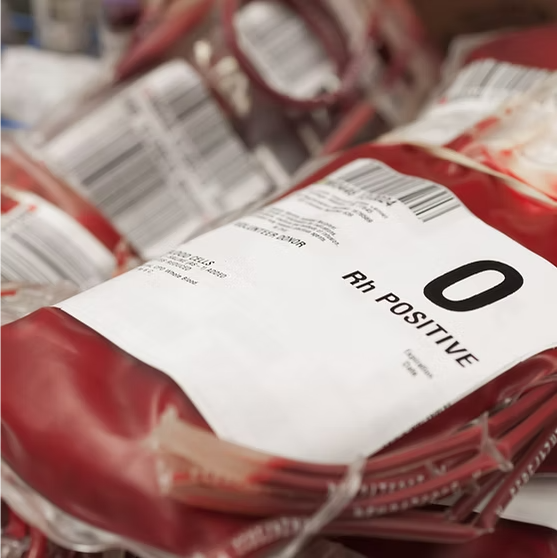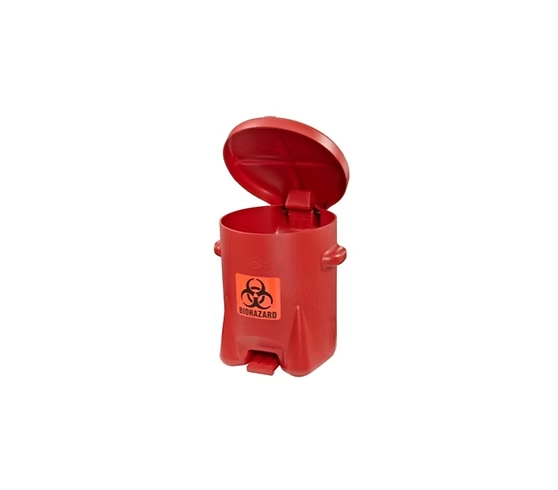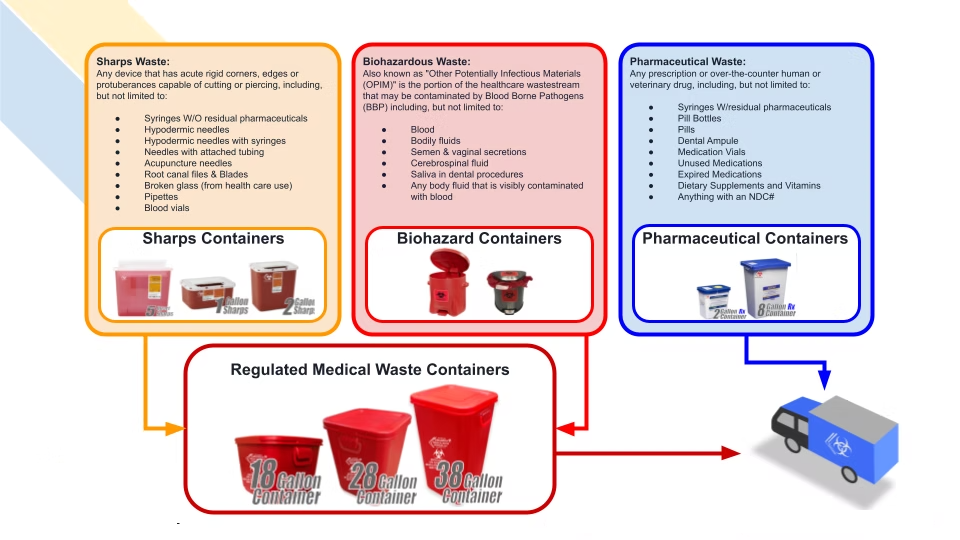Biohazard waste disposal in LA
Give Us a Call (866) 305-9001
Give Us a Call (866) 305-9001
Emergency Response Biohazard Waste Disposal in LA is your go-to resource for safe and reliable sharps container disposal. With our wide selection of services, you can be sure that your sharps disposal needs are taken care of. We have the experience and expertise to get the job done right, providing you with a safe disposal solution. Contact us today and let us help you take care of your sharps disposal needs.

Biohazard waste disposal in LA, also known as infectious waste, refers to any material that poses a risk of infection to humans, animals, or the environment. This type of waste typically originates from healthcare facilities, laboratories, and medical research centers and includes any item contaminated with blood, bodily fluids, or other potentially infectious materials. Proper disposal of biohazard waste is crucial to prevent the spread of infectious diseases and ensure a safe and healthy environment.
Examples of Biohazard Waste:
Pathological Waste: Human tissues, organs, and body parts removed during surgery or autopsy.
Blood and Bodily Fluids: Blood-soaked bandages, gauze, and other materials contaminated with bodily fluids.
Microbiological Waste: Cultures, stocks, and specimens from medical laboratories.
Animal Waste: Carcasses, body parts, and bedding from animals exposed to infectious agents.
Personal Protective Equipment (PPE): Used gloves, gowns, masks, and other protective clothing.
A biohazard waste container is a specialized receptacle designed for the safe disposal of materials contaminated with potentially infectious agents. These containers are essential in healthcare, laboratory, and research settings to prevent the spread of infectious diseases and protect healthcare workers, patients, and the environment. Biohazard waste containers are typically made of durable, puncture-resistant materials and are clearly marked with the biohazard symbol to indicate their purpose. They come in various sizes and configurations, including foot-activated models, to accommodate different types of biohazardous waste and ensure easy and safe disposal.
Features of Biohazard Waste Containers:
Durable Construction: Made from puncture-resistant materials to prevent leaks and punctures.
Clear Labeling: Marked with the biohazard symbol for easy identification.
Variety of Sizes: Available in different sizes to handle various amounts of waste.
Foot-Activated Models: Allows hands-free operation to reduce the risk of contamination.
Secure Lids: Equipped with tight-fitting lids to contain waste securely and minimize exposure.
Compliance with Regulations: Designed to meet OSHA and other regulatory standards for safe waste disposal.


Proper placement of biohazard containers is crucial to ensure safety and compliance with health regulations. Biohazard containers should be strategically located in areas where biohazardous waste is frequently generated, such as patient rooms, operating rooms, laboratories, and other medical or research facilities. They must be easily accessible to healthcare professionals, allowing for quick and safe disposal of contaminated materials. According to OSHA guidelines, containers should be placed as close as possible to the point of use and at a height that minimizes the risk of needlestick injuries. This careful positioning helps maintain a clean and hazard-free environment, protecting both staff and patients.
Ideal Locations for Biohazard Containers:
Patient Rooms: Near bedsides to allow immediate disposal of used gloves, dressings, and other contaminated items.
Operating Rooms: Close to surgical sites to dispose of sharps and other surgical waste efficiently.
Laboratories: At workstations where biological materials and cultures are handled.
Nurses’ Stations: Easily accessible for disposing of biohazard waste generated during routine care activities.
Procedure Rooms: Near examination tables for the disposal of medical waste during procedures.
Common Areas: Strategically placed in high-traffic areas to ensure quick and safe disposal of biohazardous materials.
While biohazard containers are designed for the safe disposal of infectious waste, certain items should not be placed in them to avoid contamination and ensure proper waste management. Items that do not pose a biological hazard or are not contaminated with potentially infectious materials should be disposed of in regular trash or other designated containers. Improper disposal of non-biohazardous waste in biohazard containers can lead to unnecessary hazards, increased disposal costs, and potential regulatory violations. Understanding what should not go into a biohazard container is essential for maintaining a safe and compliant waste management system.
Items That Should NOT Go Into a Biohazard Container:
General Waste: Paper, packaging materials, and food waste that are not contaminated with biohazardous materials.
Recyclables: Plastic bottles, cans, and other recyclable materials.
Chemical Waste: Hazardous chemicals, solvents, and pharmaceuticals that require specialized disposal methods.
Radioactive Waste: Materials contaminated with radioactive substances, which require separate handling and disposal.
Sharps Without Contamination: Unused needles and other sharp objects that have not been exposed to biological hazards should go into designated sharps containers.
Non-Contaminated PPE: Gloves, masks, and gowns that have not been exposed to infectious agents.
